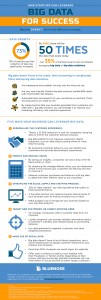— September 27, 2018

15299 / Pixabay
As marketers, we spend a significant amount of time, energy, and resources attracting people to our website. After all, driving traffic to your homepage gets you one step closer to a coveted conversion, or even better—a purchase! But what are visitors actually doing when they get there? Well, in most instances, probably nothing. In fact, a recent study indicated that just 2 percent of people will convert or purchase something the very first time they visit your website.
Think about the last time you made a big purchasing decision. Were you ready to buy right away or did you need more time to think, research, or compare your options? Consumers today have access to a wealth of information that empowers them to learn as much as they can about your product, the industry you serve, and what your competitors are up to.
Retargeting ads can be an extremely effective component of your inbound marketing strategy if they are executed correctly. This beginner’s guide tells you what you need to know about retargeting ads and how to utilize them, unlocking your ability to draw visitors back to your site once they are closer to making a purchasing decision.
What Are Retargeting Ads?
The best way to describe a retargeting ad is through a simple example. Last week, I was browsing through several websites looking for new shoes for my daughter. Being an active four-year-old, she always seems to wear through her shoes quickly, so I was on a mission to find something that was both cost-effective and durable. After looking at several different websites, I decided to hold off on making a purchase.
Later that evening, I came back to my laptop to do a little work. While I was browsing a completely different website, something in the corner of the screen caught my eye—it was an ad that pictured a little girl running around in the very same shoes I was considering earlier in the day! Let me tell you, it worked! I stopped what I was doing and bought the shoes.
This is a perfect example because it doesn’t just tell you what a retargeting ad is, but it also conveys the greatest benefit they can provide. Retargeting ads give you the innate ability to capture someone’s attention long after they are done thinking about your product. Part of what makes retargeting so effective is that you are positioning yourself in front of people who have already engaged with your brand, driving them one step closer to a conversion.
How Do Retargeting Ads Work?
At this point, you may be wondering how a retargeting ad works. Although the method can vary slightly based on how you have your ads set up, here’s the gist of it:
- A visitor comes to your site and browses through a few pages.
- While they are on your website, a small piece of code called a cookie is placed on the visitor’s browser—thank you, Javascript!
- The visitor leaves your website and either begins browsing other websites or leaves their computer entirely.
- Eventually, whether it be minutes, hours, or weeks later, your visitor will end up on a webpage that serves ads.
- The cookie that your website has stored in the visitor’s browser will enable you to display a personalized ad to them at a moment when they aren’t thinking about your product. Genius, right?
One of the biggest reasons people turn away from retargeting ads is that they don’t want to make it seem like they are encroaching on a visitor’s privacy. But statistics show that 30 percent of consumers have a positive or very positive reaction to retargeted ads, while only 11 percent feel negatively about them.
The keys to an effective retargeting strategy are balance and moderation. Although you want to put your product and services in front of engaged visitors, you don’t want it to seem like you are following them around the internet. Because of this, you must closely monitor the frequency, placement, and segmentation of whom you serve your ads to.
Types of Retargeting Ads
There are many different avenues you can take when implementing a retargeting strategy. The one you choose will depend on your company’s specific budget, goals, and objectives.
Site Retargeting
Site retargeting focuses on placing your ads in front of people who have already visited your website, similar to the example I shared earlier. Although this is the most common form of retargeting, it is also important to keep in mind that not everyone who visits your website is going to be a qualified lead—or even interested in your product. Be mindful of the pages you use to initiate tracking. For example, you probably wouldn’t want to initiate tracking on the home page as your visitors are most likely browsing for general information about your products and services. However, pages like a contact us page or an abandoned shopping cart would be a great place to start.
Dynamic Retargeting
Dynamic retargeting is very similar to smart CTAs in that you are able to show personalized ads to people based on the pages they’ve visited, the content they’ve engaged with, or the behavior they’ve displayed on your website. These ads are extremely effective because you have the power to adapt your message to each person that views your ad.
Facebook Retargeting
This method goes a step beyond your traditional retargeting ads. If your visitors are surfing the web, they are also likely on Facebook. Facebook retargeting provides you with the unique ability to not only position your product in front of people who are already engaged with you, but also serve that ad to them on a channel where they might not expect to find you. This is an extremely powerful strategy that ensures your brand is at the top of their minds, regardless of what they are doing throughout the day.
CRM Retargeting
CRM retargeting can be very effective but requires a bit more work than some of the other strategies mentioned above. With this method, you can target lists in your CRM based on a specific set of criteria. The challenge in this is that your lists need to be clean and properly segmented to notice any tangible results. It’s not impossible—it just takes a little bit of work. Most retargeting platforms, such as AdRoll and ReTargeter, offer an easy way to implement this strategy.
Benefits of Retargeting Ads
If I haven’t convinced you of the benefit of retargeting ads yet, these stats will make you think twice about not immediately putting them in your inbound marketing toolbox:
- By utilizing retargeting ads, you are 70 percent more likely to convert a previous visitor into a paying customer. Compared to the mere 2 percent that convert the first time they visit your site, those are pretty good odds!
- The average click-through rate for typical display ads is 0.07 percent, while the average click-through rate for retargeted ads is 0.70 percent—that’s 10 times higher! Think about it: People are more willing to pay attention to an ad when they’ve already displayed interest in the product. You’re subtly reminding them that you’re still there.
- Compared to other ad placement strategies, retargeting ads generated a 1,046 percent increase in branded search traffic. This is a clear indicator that brand awareness and retargeting ads go hand in hand.
- Implementing a retargeting strategy can result in a 147 percent increase in average conversion rates when set up correctly. Long story short, people are more willing to provide you with their contact information once they have established a level of trust with your brand.
One of the biggest misconceptions surrounding retargeting ads is that they are only successful when used in a B2C market. This, however, is simply not true. B2B companies can also capitalize on the benefits of retargeting ads, especially those companies that tend to have a lengthy sales cycle. Remember, the more you can get yourself in front of your target audience, the better chance you have of converting those warm visitors into hot leads!
Digital & Social Articles on Business 2 Community
(59)
Report Post






